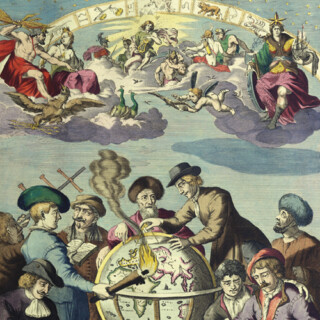Excellentissimo Domino d. Lamoraldo Claudio Francisco... Antoni
[Antwerp],
1650
A set of four etchings plus title, fine impressions printed on paper with a Strasburg Lily watermark, trimmed on the platemark but showing the borderline as usual, mounted and contained within a black buckram box.
Approximately 248 by 408mm. (9.75 by 16 inches).
18607
notes:
A set of four etchings (plus title), to commemorate the visit paid by the Imperial Post-master General, the Count de la Tour et Taxis (Thurn und Taxis), and his wife to the Imperial Postmaster of the Netherlands, Alexander Roelants. During the brief period he was out of England, from 1645 to 1652, Hollar may have personally witnessed the event.
Lamoral II Claudius Franz, Count of Thurn and Taxis had inherited the office of Imperial Postmaster General from his mot...
Lamoral II Claudius Franz, Count of Thurn and Taxis had inherited the office of Imperial Postmaster General from his mot...
bibliography:
NHG Hollar 1082-1086; cf. Pennington 562-6.
provenance:
Provenance:
The title: G.A. Cardew (Lugt 1134). The four etchings: John Cornforth.
The title: G.A. Cardew (Lugt 1134). The four etchings: John Cornforth.












